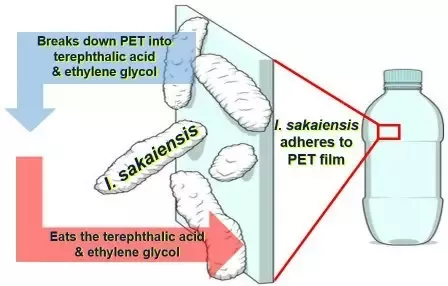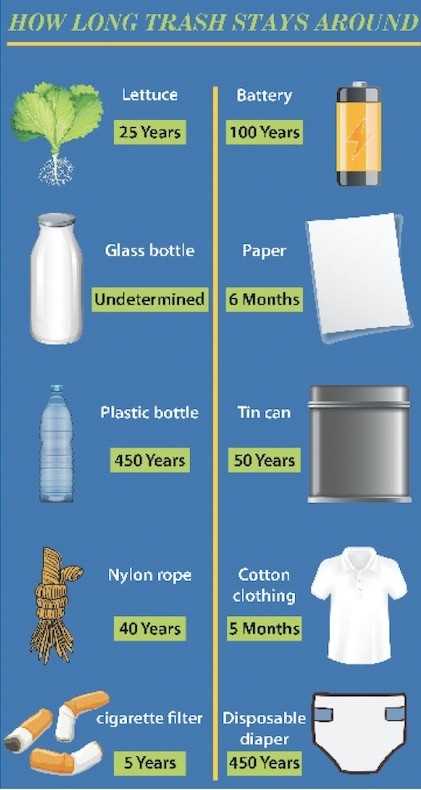Plastic pollution is a global crisis that threatens our environment and ecosystems. While many efforts are being made to reduce plastic waste and promote recycling, a significant portion of plastic still ends up in landfills, oceans, and other natural habitats. One of the key questions surrounding plastic pollution is how long it takes for plastic to break down naturally.
To address this question, scientists and researchers have been conducting extensive studies to understand the digestion time of plastic. Plastic is made up of long-chain polymers that are resistant to natural decomposition. This durability is what gives plastic its long shelf life, but it also poses a significant challenge when it comes to disposal and environmental impact.
The digestion time of plastic varies depending on various factors such as the type of plastic, environmental conditions, and the presence of microbial activity. Plastic can take anywhere from several decades to several centuries to break down completely. This prolonged degradation process is primarily due to the lack of natural enzymes and microorganisms that can efficiently break down these complex polymers.
While some types of plastic may fragment and appear to degrade over time, they do not fully biodegrade. Instead, they break down into smaller and smaller pieces known as microplastics, which can persist in the environment for hundreds or even thousands of years. Microplastics can be ingested by marine life and other organisms, posing a significant threat to their health and the health of ecosystems as a whole.
Understanding the digestion time of plastic is crucial for developing effective waste management strategies and mitigating the environmental impact of plastic pollution. It highlights the importance of reducing single-use plastic consumption, promoting recycling, and investing in research and innovation to find more sustainable alternatives. By exploring the digestion time of plastic, we can work towards a future where our environment is free from the harmful effects of plastic pollution.
- Understanding the Digestive Process
- The Journey of Plastics in the Human Digestive System
- Factors Affecting the Breakdown Time of Plastics
- 1. Type of Plastic:
- 2. Environmental Conditions:
- 3. Size and Shape of Plastic:
- 4. Chemical Composition:
- 5. Microorganisms and Digestive Enzymes:
- Implications of Prolonged Plastic Digestion
- Question-Answer:
- What is plastic digestion?
- Why is plastic digestion important?
- How long does it take for plastic to break down naturally?
- Is there a way to accelerate the digestion of plastic?
- What are the potential benefits of plastic digestion?
- What is plastic digestion?
Understanding the Digestive Process

The digestive process is a complex and fascinating system that allows our bodies to break down and absorb nutrients from the food we eat. It involves a series of steps that occur in different parts of the digestive tract, each with its own specific function.
First, the process begins in the mouth, where food is chewed and mixed with saliva. This helps to break down the food into smaller particles and initiates the release of enzymes that begin the digestion of carbohydrates.
From there, the food travels down the esophagus and into the stomach. In the stomach, gastric juices and enzymes continue the digestion process, breaking down proteins and killing any harmful bacteria that may be present.
Next, the partially digested food moves into the small intestine, where further digestion occurs. Here, enzymes from the pancreas and bile from the liver help to break down fats, proteins, and carbohydrates into their individual components. These nutrients are then absorbed into the bloodstream through the lining of the small intestine.
Finally, any remaining undigested material passes into the large intestine. Here, water is absorbed, and the waste material is formed into feces, which is eventually eliminated from the body during a bowel movement.
Overall, the digestive process is a finely tuned system that allows our bodies to extract the necessary nutrients from the food we consume. It’s important to understand this process in order to appreciate how plastic, a synthetic material, interacts with our digestive system and how long it takes for it to break down, if at all.
The Journey of Plastics in the Human Digestive System
Plastics have become an integral part of our modern society, being used in various industries and products. However, their impact on the environment and our health has raised concerns. One aspect of this issue that has gained significant attention is the digestion time of plastics in the human body. Understanding the journey of plastics in the human digestive system is crucial to comprehending their potential effects on our health.
When a person ingests plastic, it takes an intricate journey through the digestive system. The process begins in the mouth, where chewing breaks down larger plastic particles into smaller ones. These smaller particles then travel down the esophagus and enter the stomach.
Once in the stomach, the plastic particles encounter a highly acidic environment. The stomach acids help to further break down the plastics into even smaller fragments. However, it is important to note that plastics are not easily broken down by stomach acids, as they are designed to be durable and long-lasting.
The journey continues as the plastic particles move into the small intestine. Here, digestive enzymes and bile play a crucial role in the breakdown of plastics. The small intestine is where most of the nutrients from food are absorbed into the bloodstream, and the same applies to plastic particles. Some smaller plastic fragments may be absorbed into the bloodstream, potentially leading to further health concerns.
After passing through the small intestine, any remaining plastic particles reach the large intestine, also known as the colon. The colon is responsible for absorbing water and electrolytes, and any undigested plastic particles continue their journey through the gastrointestinal tract.
The final stage of the journey takes place in the rectum, where the remaining plastic particles are eliminated from the body through the process of defecation. However, it is worth mentioning that not all plastic particles are eliminated from the body. Some microscopic plastic fragments may still be present in the digestive system, posing potential long-term health risks.
Research on the digestion time of plastics in the human body is still ongoing, and it is a complex topic that requires further investigation. Understanding the journey of plastics in the human digestive system is crucial for developing strategies to minimize plastic consumption and its potential health impacts.
Factors Affecting the Breakdown Time of Plastics
Several factors play a significant role in determining the length of time it takes for plastics to break down:
1. Type of Plastic:
The type of plastic used is one of the most influential factors affecting the breakdown time. Plastics are classified into different categories, and each category has a varying rate of degradation. For example, some types of plastic, like polyethylene, can take hundreds of years to decompose, while others, like polylactic acid (PLA), can break down in a matter of months.
2. Environmental Conditions:
The environment in which the plastic is exposed plays a crucial role in its degradation rate. Factors such as temperature, sunlight exposure, and humidity levels can accelerate or decelerate the breakdown process. Plastics exposed to high temperatures and direct sunlight tend to break down more rapidly compared to those in colder or darker conditions.
3. Size and Shape of Plastic:
The size and shape of plastic objects can also affect their breakdown time. Smaller plastic particles or fragments have a larger surface area-to-volume ratio, making them more susceptible to degradation. Similarly, plastics with more irregular shapes have more exposed surface area and may break down faster compared to larger, compact objects.
4. Chemical Composition:

The chemical composition of the plastic can influence its breakdown time. Plastics made from biodegradable or compostable materials, such as plant-based polymers, tend to degrade more rapidly compared to conventional plastics made from fossil fuel-derived polymers. The presence of additives, such as plasticizers or stabilizers, can also affect the degradation rate.
5. Microorganisms and Digestive Enzymes:
The presence of microorganisms and digestive enzymes can significantly impact the breakdown time of plastics. Certain bacteria and fungi have the ability to consume and break down certain types of plastic, leading to faster degradation. The availability of these microorganisms and enzymes in the environment can vary and affect the overall breakdown rate of plastics.
Understanding these factors is essential in determining the environmental impact of plastic waste and developing strategies to minimize plastic pollution. By considering these factors, researchers and policymakers can work towards finding sustainable alternatives and implementing effective waste management practices.
Implications of Prolonged Plastic Digestion
The extended digestion time for plastics can have significant implications for the environment and human health. As plastic waste accumulates in landfills, rivers, and oceans, the slow breakdown process can lead to various negative consequences.
One of the major concerns is the impact on wildlife. Many marine animals mistake plastic pieces for food and ingest them. If these plastic fragments take an extended period to break down, they can accumulate in the digestive systems of these animals, leading to severe health issues. This can result in malnutrition, reproductive problems, and even death.
Furthermore, plastics that take a long time to digest can also contribute to the pollution of water sources. As they degrade over time, microplastics are released into the water, which can be harmful to both marine life and humans. Microplastics have been found in drinking water, seafood, and even salt, making their way into our bodies and potentially causing health problems.
Another consequence of prolonged plastic digestion is the persistence of plastic waste in the environment. When plastics don’t break down for years or even centuries, they continue to accumulate as pollution, contributing to the global plastic crisis. This not only affects the aesthetics of natural landscapes but also harms ecosystems and disrupts the balance of ecosystems.
Additionally, the longevity of plastic digestion raises concerns about the potential for bioaccumulation of harmful chemicals. Some plastics contain additives such as phthalates and bisphenol A (BPA), which can leach into the environment as the plastic breaks down. As these chemicals persist in the environment, they can accumulate in organisms, potentially causing toxicity and affecting the entire food chain, including humans who consume contaminated organisms.
Overall, the prolonged digestion time of plastic presents a significant challenge for our environment and health. It emphasizes the urgent need to reduce plastic waste and develop more sustainable alternatives to ensure the well-being of ecosystems and future generations.
Question-Answer:
What is plastic digestion?
Plastic digestion refers to the process by which microorganisms break down plastic and convert it into harmless substances.
Why is plastic digestion important?
Plastic digestion is important because it can help in reducing the environmental impact of plastic waste. By breaking down plastic, it can prevent pollution and harm to wildlife and ecosystems.
How long does it take for plastic to break down naturally?
The time it takes for plastic to break down naturally can vary widely depending on the type of plastic and the environmental conditions. Some types of plastic, such as PET bottles, can take hundreds of years to decompose, while others may break down more quickly.
Is there a way to accelerate the digestion of plastic?
Researchers are studying various methods to accelerate the digestion of plastic, such as using enzymes or bacteria that can efficiently break down plastic. These methods show promise in reducing the time it takes for plastic to decompose.
What are the potential benefits of plastic digestion?
Plastic digestion has several potential benefits, such as reducing plastic waste in landfills and oceans, preventing harm to wildlife, and decreasing pollution. It can also be a more sustainable alternative to traditional plastic recycling methods.
What is plastic digestion?
Plastic digestion refers to the process of breaking down plastic materials into smaller components through chemical or biological means.